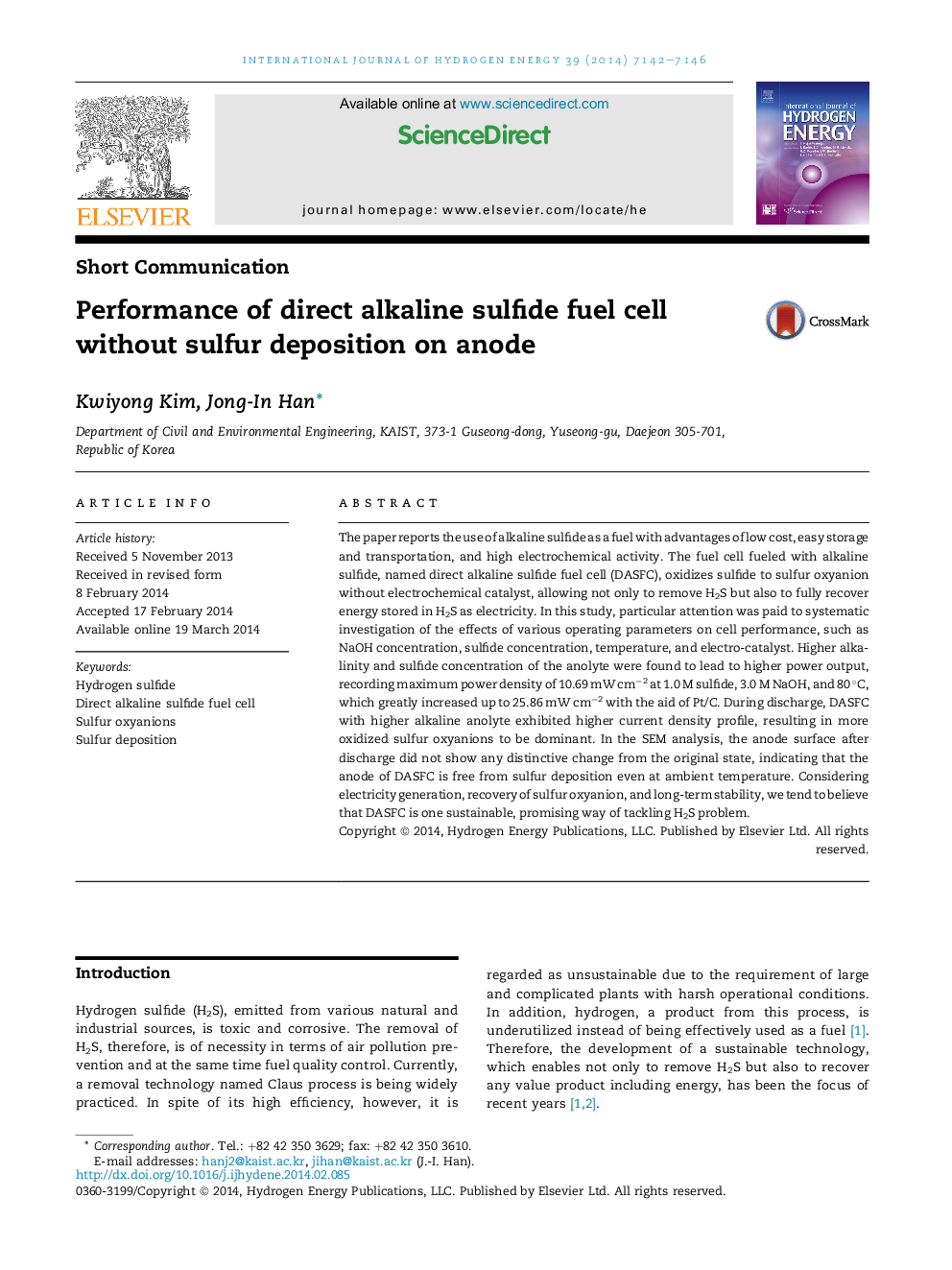| Article ID | Journal | Published Year | Pages | File Type |
|---|---|---|---|---|
| 1273468 | International Journal of Hydrogen Energy | 2014 | 5 Pages |
•The performance of direct alkaline sulfide fuel cell was studied.•Higher alkalinity resulted in faster and deeper oxidation with higher power output.•The anode was free from sulfur deposition even at ambient temperature.
The paper reports the use of alkaline sulfide as a fuel with advantages of low cost, easy storage and transportation, and high electrochemical activity. The fuel cell fueled with alkaline sulfide, named direct alkaline sulfide fuel cell (DASFC), oxidizes sulfide to sulfur oxyanion without electrochemical catalyst, allowing not only to remove H2S but also to fully recover energy stored in H2S as electricity. In this study, particular attention was paid to systematic investigation of the effects of various operating parameters on cell performance, such as NaOH concentration, sulfide concentration, temperature, and electro-catalyst. Higher alkalinity and sulfide concentration of the anolyte were found to lead to higher power output, recording maximum power density of 10.69 mW cm−2 at 1.0 M sulfide, 3.0 M NaOH, and 80 °C, which greatly increased up to 25.86 mW cm−2 with the aid of Pt/C. During discharge, DASFC with higher alkaline anolyte exhibited higher current density profile, resulting in more oxidized sulfur oxyanions to be dominant. In the SEM analysis, the anode surface after discharge did not show any distinctive change from the original state, indicating that the anode of DASFC is free from sulfur deposition even at ambient temperature. Considering electricity generation, recovery of sulfur oxyanion, and long-term stability, we tend to believe that DASFC is one sustainable, promising way of tackling H2S problem.
